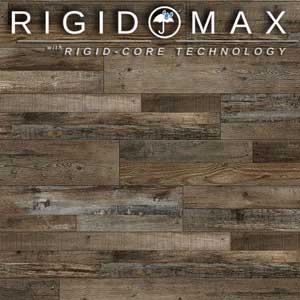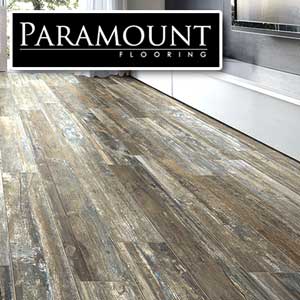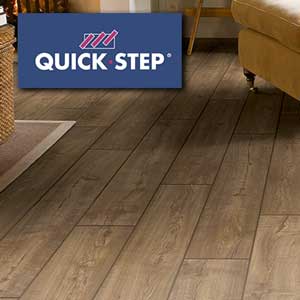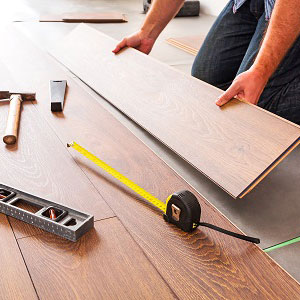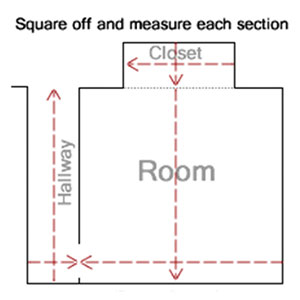Floor & Wall Tile Installation
Installing floor or wall tiles is a great way to add distinctive style and amazing durability to any of your living areas. Unlike some choices for flooring, this product has some of the greatest surface hardness you can buy. In addition, they will not break your budget. Let us take a look at some of the basic things you need to consider when installing this type of product.
Flooring Tile
If installing ceramic or porcelain tile on a floor you will have six steps that you will need to carry out. They are Surface Preparation, Layout, Applying Adhesive, Cutting Tile, Setting Tile, and Grouting Tile. Many of these steps carry over into installing wall tile as well so let us take a little deeper look at these basic six steps.
Surface Preparation
Generally, tile may be installed over most structurally sound substrates, if they are clean, smooth, dry and free of wax, soap scum and grease. You will need to repair patch and level any damaged loose or uneven areas. Remove any moldings, trim, appliances, etc., which could interfere with installation. Doorjambs can be undercut for tile to slip under.
Layout
Begin by marking the center point of all four walls. Snap chalk lines between the center points of opposite walls, which will intersect at the center of room. Make sure they are perfectly square, and adjust if necessary. Next, lay out a row of loose tiles along the centerlines in both directions, leaving spaces for uniform joints (use tile spacers). If this layout leaves cuts smaller than 1/2 tile at walls, adjust the centerline by snapping a new line 1/2 tile closer to the wall. Repeat along other centerline if necessary. Now divide the room into smaller grids (approx. 2′ x 3′) by snapping additional lines parallel to centerlines.
Applying Adhesive
Make sure you select the right adhesive for the substrate you’re using. Carefully read and follow all instructions and precautions on the adhesive or mortar package. Mix only enough to be used within 30 minutes. Using the type trowel recommended on the adhesive package, spread a 1/4″ coat on the surface of one grid area, using the flat side of the trowel. (Usually for larger tile you will need a larger notch trowel, make sure to check with your tile manufacturers.) Do not cover guidelines. Next, use the notched side of trowel to comb adhesive into standing ridges by holding trowel at a 45-degree angle. Then remove excess adhesive, leaving a uniform, ridged setting bed. Do not spread adhesive over a larger area than can be set in 15 minutes.
Cutting Tile
Measure tiles to be cut carefully and mark with a pencil or felt-tip pen. Make straight or diagonal cuts with a tile cutter, curved cuts with a nipper (chipping away small pieces for best results), full-length curved cuts with a rod saw. Sharp-cut edges may be smoothed with a carborundum stone.
Setting Tile
Variation of shades is an inherent characteristic of ceramic and porcelain tile. It is best practice to mix tiles from several cartons as you set, for a blended effect. Begin installing tiles in the center of the room, one grid at a time. Finish each grid before moving to the next. Start with the first tile in the corner of the grid and work outward. Set tiles one at a time using a slight twisting motion. Don’t slide tiles into place. Insert tile spacers as each tile is set, or leave equal joints between tiles. Fit perimeter tiles in each grid last, leaving 1/4″ gap between tile and wall. Any rectangle porcelain should never be set in a running bond pattern, rather no more than a 1/3 overlap, the joint should be widened to 3/16″ and use of a large unit porcelain mortar should be employed. When grid is completely installed, tap in all tiles with a rubber mallet or hammer and wood block, to ensure a good bond and level plane. Remove excess adhesive from joints with a putty knife, and from tile with a damp sponge. Do not walk on tiles until they are set, usually in 24 hours.
Grouting Joints
Generally, you should wait about 24 hours before grouting (refer to the adhesive package for specifics). Carefully read and follow all instructions and precautions on the grout package. Make only enough to use in about 30 minutes. Remove tile spacers and spread grout on the tile surface, forcing down into joints with a rubber grout float or squeegee. Tilt the float at a 45-degree angle. Remove excess grout from surface immediately with the edge of float. Tilt it at a 90-degree angle and scrape it diagonally across tiles. Wait 15-20 minutes for grout to set slightly, then use a damp sponge to clean grout residue from surface and smooth the grout joints. Rinse sponge frequently and change water as needed. Let dry until grout is hard and haze forms on tile surface, then polish with a soft cloth. Rinse again with sponge and clean water if necessary. Wait 72 hours for heavy use. Don’t apply sealers or polishes for three weeks, and then only in accordance with manufacturer’s recommendations.
Wall Tiles
There are many similarities between installing floor tile and wall tile. However, there is also enough variation in process that you should pay attention to some of the finer points of this process. Here are a few of the finer points of wall tile inhalation you must be aware of before proceeding.
Plan Your Design
To start, you’ll need to decide if you want to keep it simple or go all out by incorporating mosaic, glass, or metal wall tile. Plan your project by sketching out your dream tile design. Then measure the area you’ll be tiling, and use a calculator to determine the quantity of tile needed. At this point, it will be very helpful to know how many square feet your selected tile will cover per package.
Prepare Your Surface
Existing walls may need extra preparation. You will need to make sure that your surface is thoroughly clean, dry, and stable. Start by scraping away any loose paint, then fill in any holes and cracks with spackle. Finally, when the surface is dry, use a light sandpaper to make sure it’s even.
Start Tiling
Set a piece of straight wood below where your bottom tile will sit. Confirm that the piece of wood is level before temporarily attaching it to the wall. The piece of wood will serve as a support system for the tile until the adhesive dries. Using a trowel, spread the adhesive in small sections with the notched edge, then install a few tiles with spacers above the piece of wood. Press tiles down with a slight twisting motion, but try not to slide them. If the tiles you’re using don’t come with spacers, you can purchase them separately and put them in place to keep the grout lines even. Keep combing the adhesive in an outward motion, and finish up the first row.
Repeat these steps, and continue tiling the wall. Work up and out from the center, and lightly, but firmly, tap the tiles with a mallet to secure them into place. Finally, clean any excess adhesive with a sponge, and make sure that there isn’t any residue on the surface of the tile. Keep in mind that your adhesive will begin to dry out in about a half an hour so work quickly and in small batches.
Apply Grout
Generally, you should wait 24 hours for adhesives to cure before grouting. Read the directions on the grout package carefully, and try not to make more grout than what you can spread in 30 minutes. Remove the tile spacers, scoop the grout onto the tile, and pack it into the spaces between the tile. Wipe off any excess grout, and be sure to wipe off tiles with your sponge. Make sure you rinse your sponge and change the water as needed. Repeat these steps until your tile project is complete.
Once you’ve finished applying the grout, you should give your tile and grout a few days to set. After a few days, you can enjoy your beautiful new tile. Tile is a great addition to any home, but it’s even better when you’ve laid it yourself.
Floor and Wall Tile Installation
DalTile Floor Tile Installation

